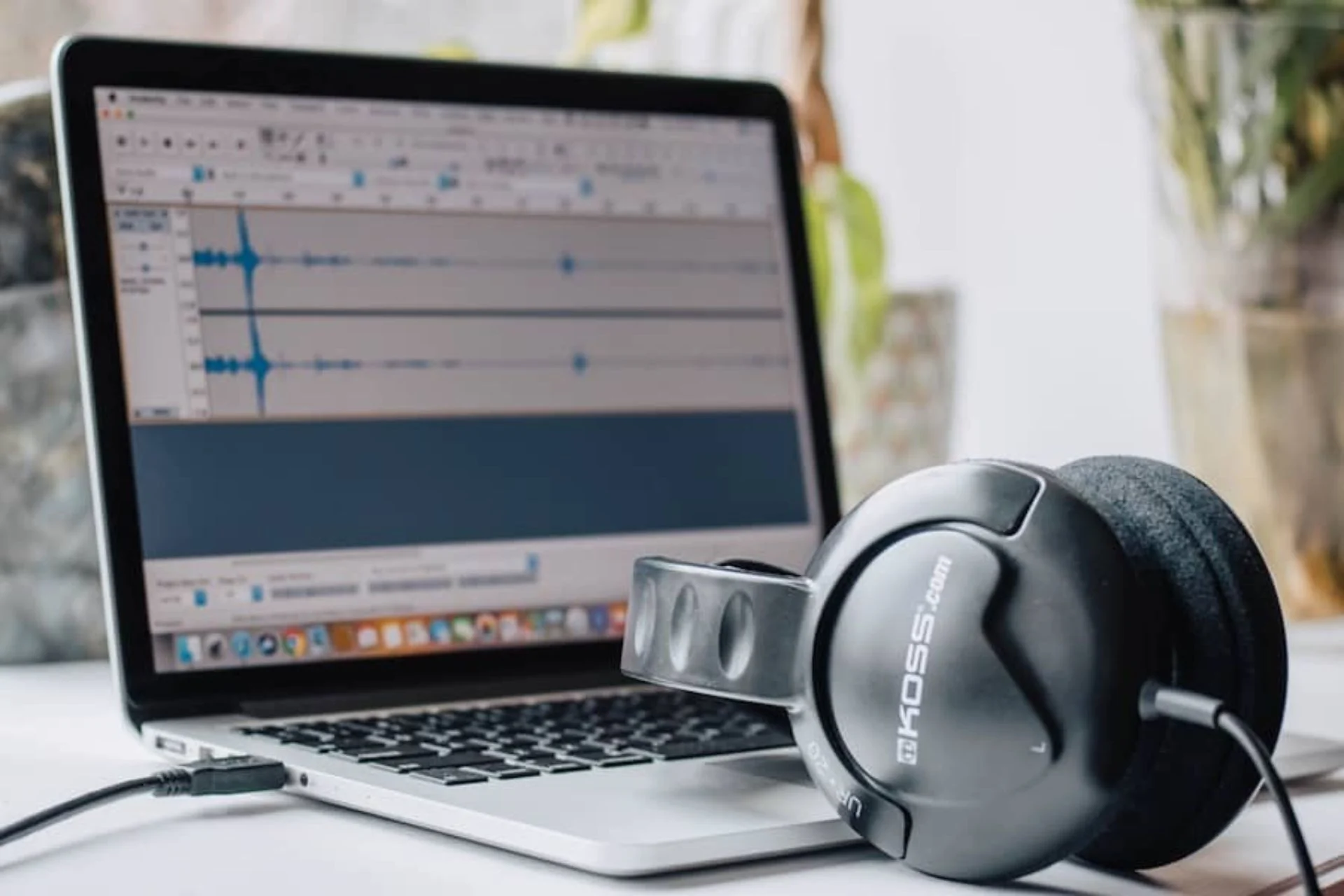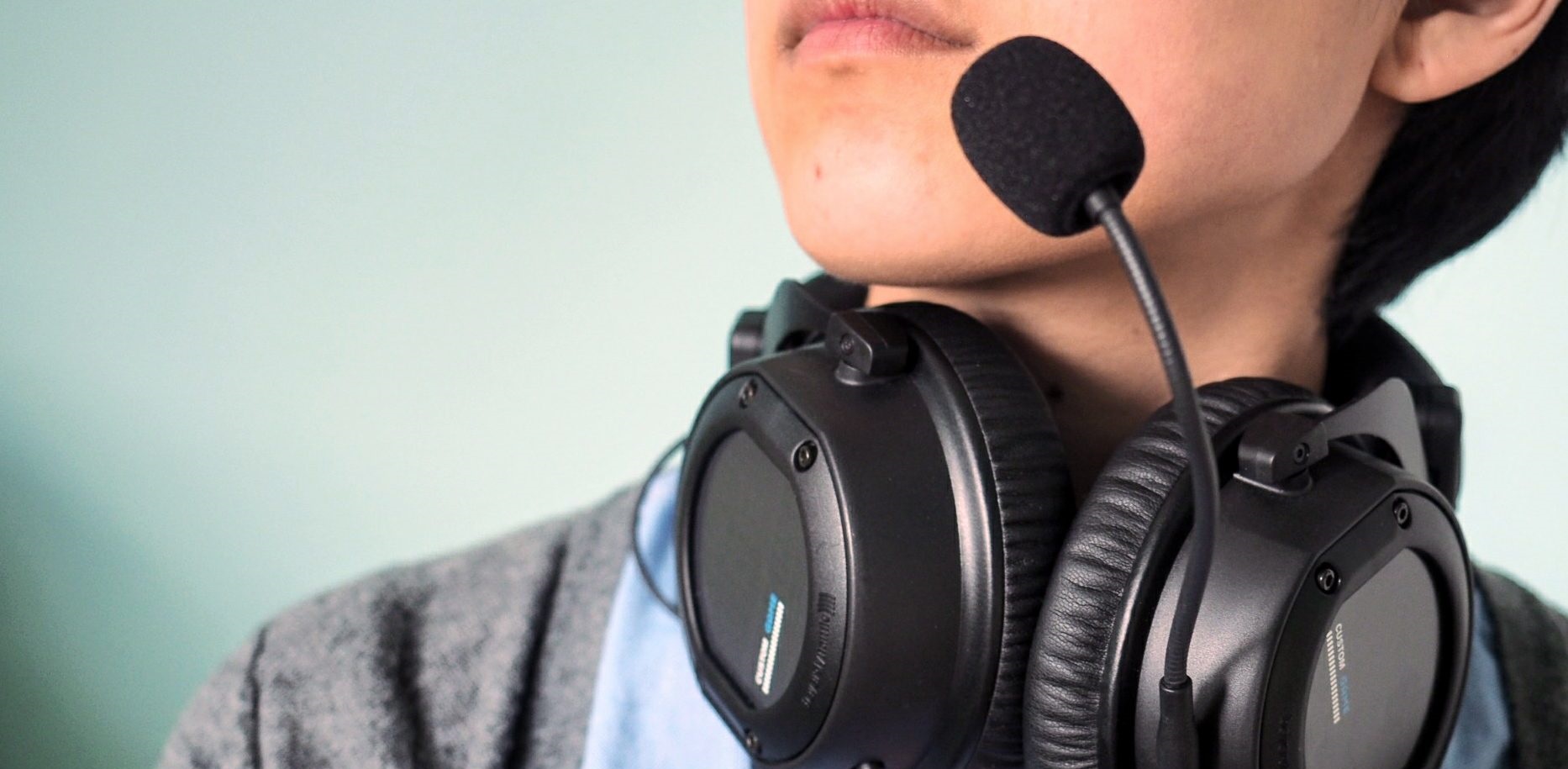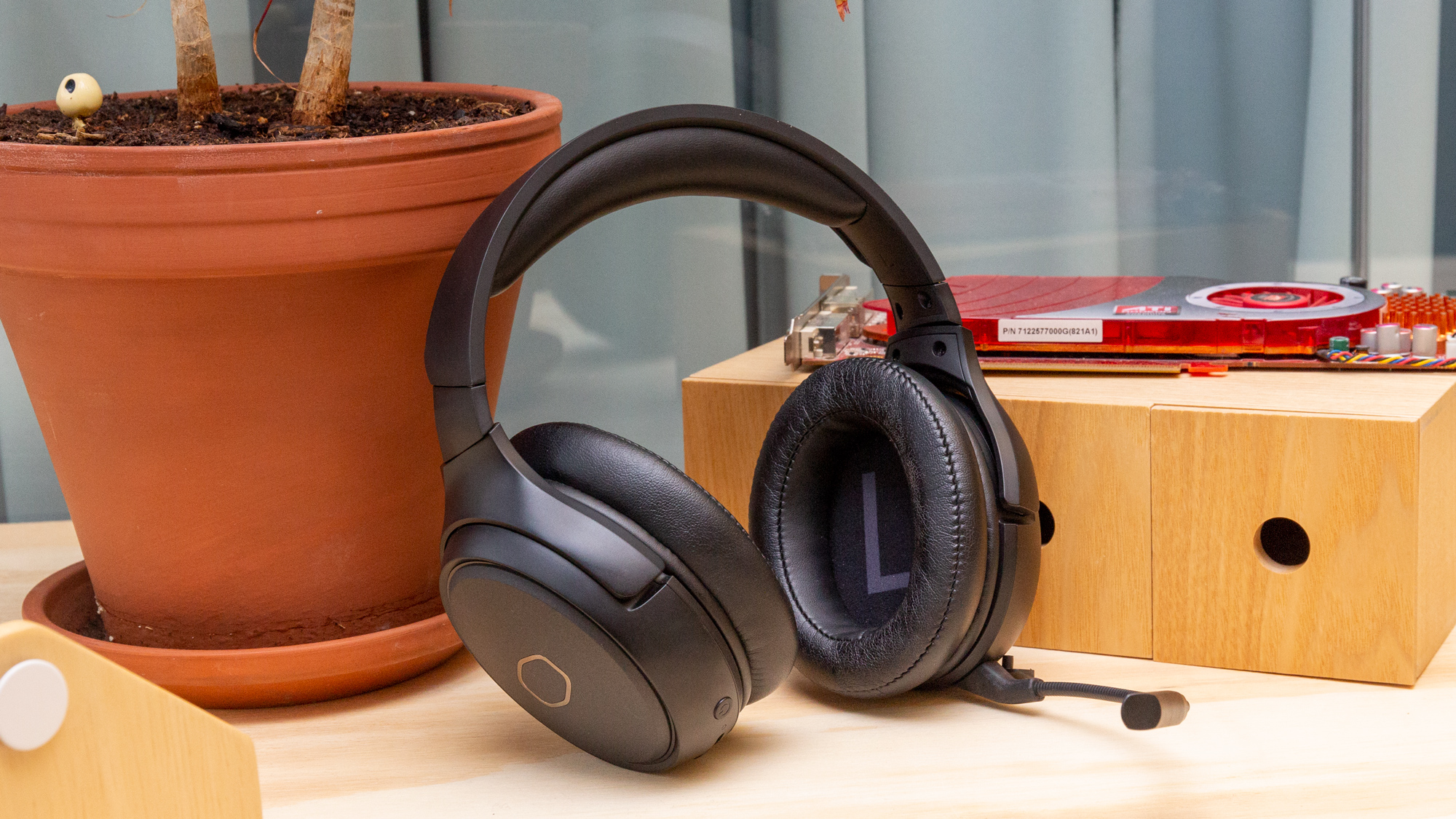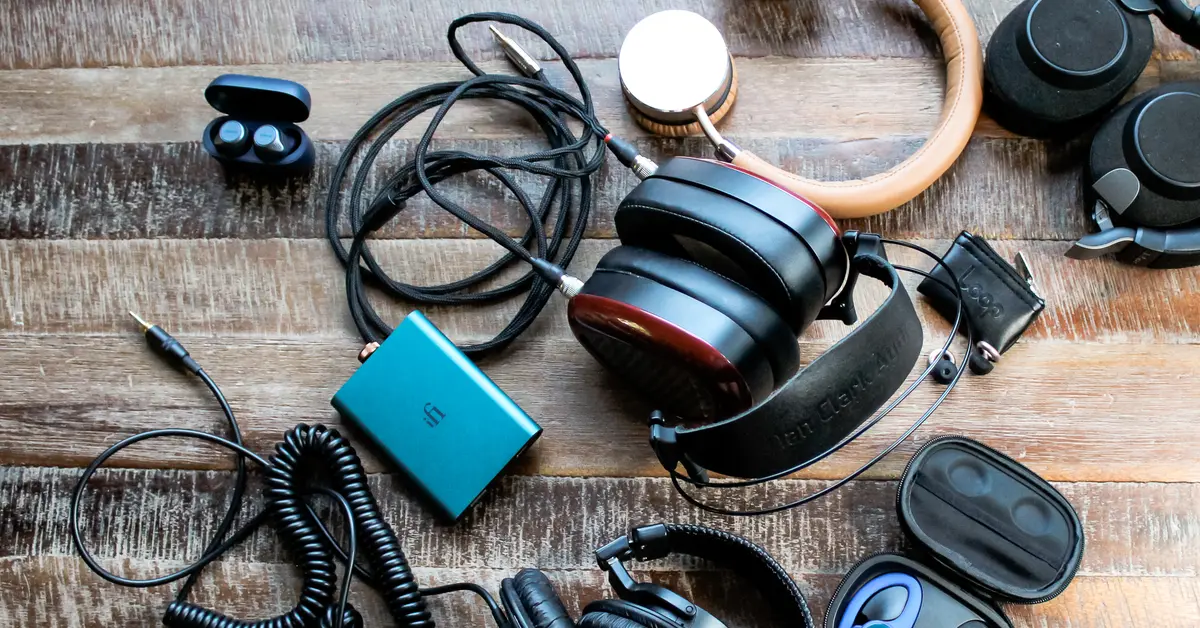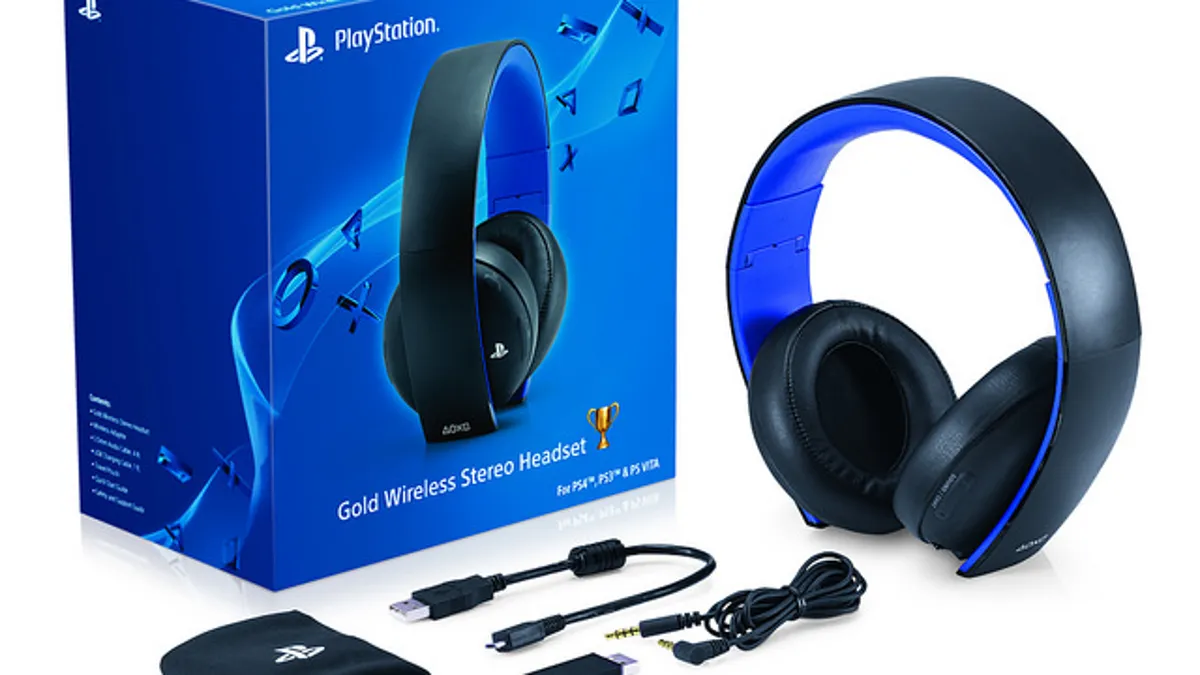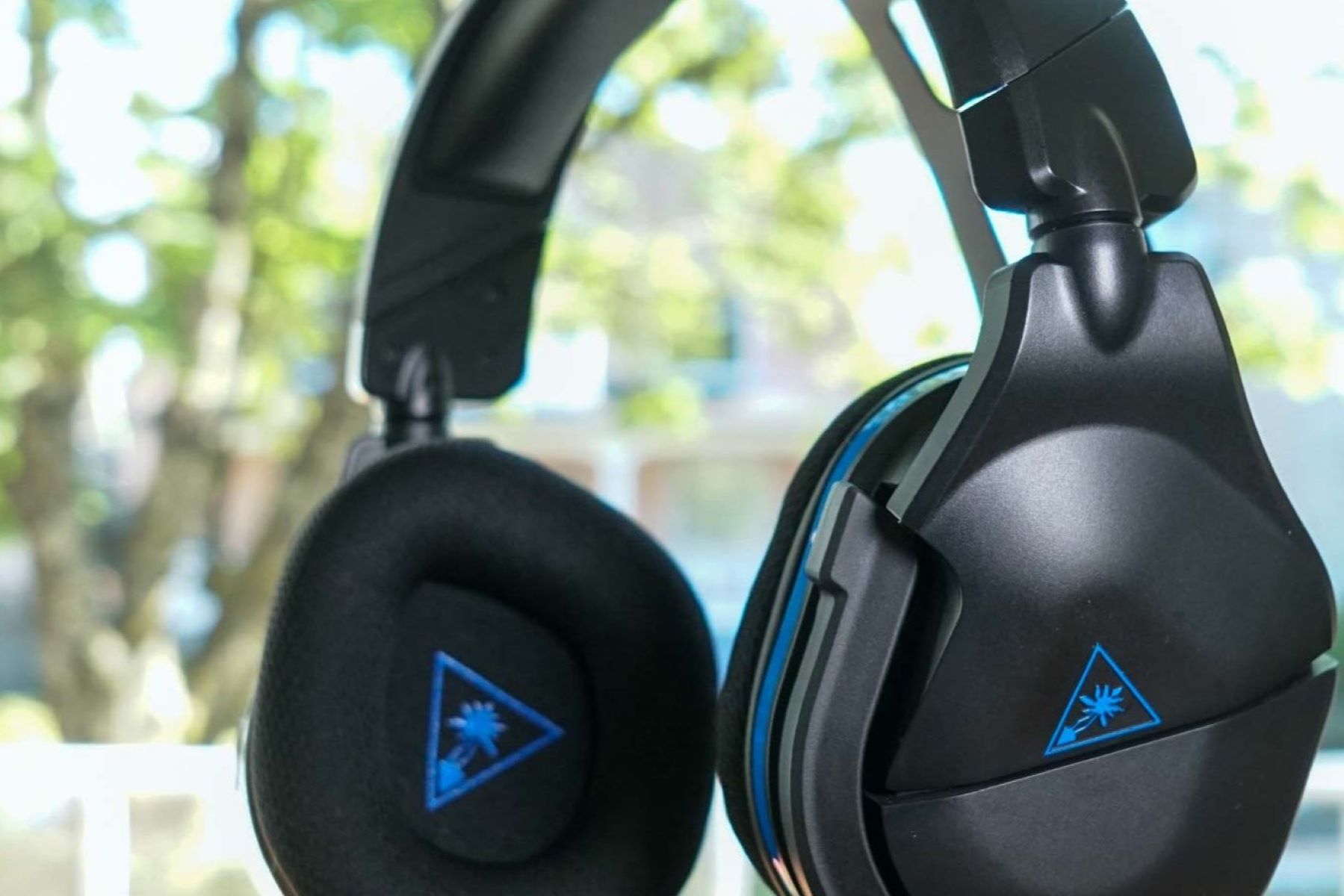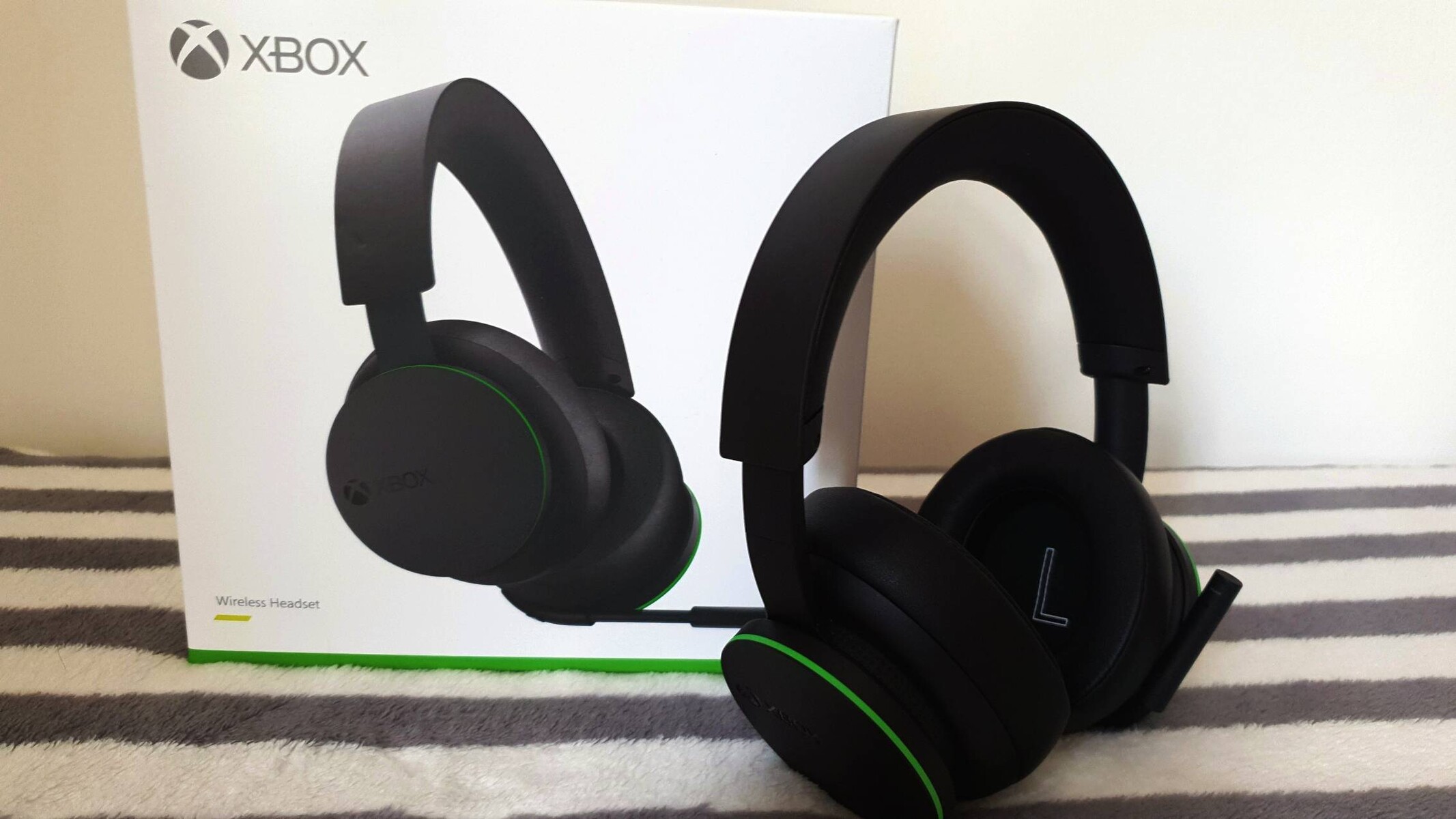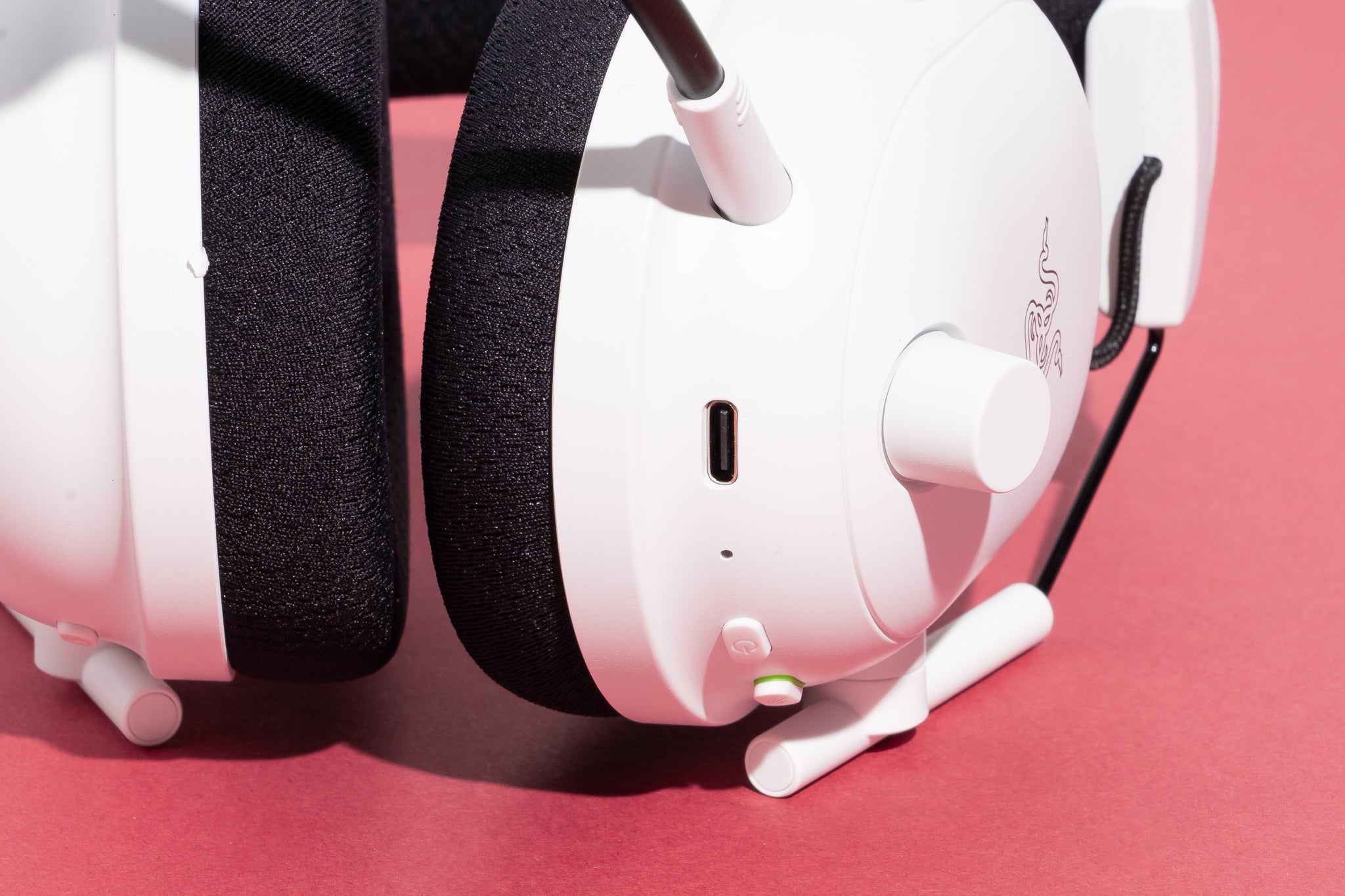Introduction
A headset microphone is a powerful tool that allows you to communicate clearly and effectively in a variety of settings, from gaming and video conferencing to creating online content. The quality of your headset microphone can significantly impact the overall experience for both you and your audience. Whether you're a professional streamer, a remote worker, or a casual gamer, optimizing your headset microphone setup is essential for achieving clear and professional audio.
In this comprehensive guide, we'll delve into the intricacies of setting up your headset microphone for optimal performance. You'll learn how to understand the capabilities of your headset microphone, position it correctly for clear audio capture, adjust its sensitivity to suit your needs, and perform essential tests to ensure that it's functioning at its best. By the end of this guide, you'll be equipped with the knowledge and skills to maximize the potential of your headset microphone and elevate your audio communication to the next level.
Let's embark on this journey to unlock the full potential of your headset microphone, empowering you to deliver crystal-clear audio and make a lasting impact in your virtual interactions. Whether you're striving for professional-grade audio quality or simply aiming to enhance your overall experience, mastering the setup of your headset microphone is a crucial step toward achieving your audio communication goals. So, let's dive in and unleash the true power of your headset microphone!
Understanding Your Headset Microphone
Your headset microphone is a compact yet sophisticated piece of technology designed to capture your voice with clarity and precision. Understanding its key features and capabilities is essential for optimizing its performance.
Microphone Type: Most headset microphones utilize either a condenser or dynamic microphone element. Condenser microphones are known for their sensitivity and ability to capture subtle nuances in voice, making them ideal for studio-quality recordings and professional streaming. On the other hand, dynamic microphones are renowned for their durability and resilience to handling noise, making them suitable for live performances and gaming sessions.
Polar Pattern: The polar pattern of your headset microphone determines the directionality of sound it can capture. Common polar patterns include cardioid, omnidirectional, and bidirectional. A cardioid pattern captures sound primarily from the front while minimizing background noise, making it ideal for solo recordings and online conversations. Omnidirectional patterns capture sound from all directions, which can be beneficial for capturing ambient sounds or group discussions. Bidirectional patterns are capable of capturing sound from the front and back, making them suitable for interviews and collaborative recordings.
Frequency Response: The frequency response of your headset microphone refers to its sensitivity to different frequencies of sound. A wider frequency response range allows the microphone to capture a broader spectrum of audio, from deep bass tones to crisp trebles. Understanding the frequency response of your microphone can help you tailor its performance to suit your specific needs, whether you're focused on vocal clarity or immersive gaming audio.
Impedance and Sensitivity: The impedance and sensitivity of your headset microphone play a crucial role in determining its compatibility with various devices and its ability to capture sound accurately. Lower impedance levels enable the microphone to work effectively with a wide range of devices, while higher sensitivity ensures that even subtle sounds are captured with precision.
By gaining a deeper understanding of these fundamental aspects of your headset microphone, you'll be better equipped to make informed decisions when setting it up and adjusting its settings to achieve optimal performance. This knowledge will serve as a foundation for the subsequent steps in optimizing your headset microphone, allowing you to harness its full potential and elevate your audio communication to new heights.
Positioning Your Headset Microphone
Proper positioning of your headset microphone is crucial for ensuring clear and consistent audio capture. The ideal placement of the microphone will not only enhance the quality of your voice transmission but also minimize background noise and unwanted audio artifacts. Whether you're engaging in online meetings, live streaming, or gaming, the following guidelines will help you optimize the positioning of your headset microphone for optimal performance.
1. Proximity to the Mouth
Position the microphone arm or boom in close proximity to the corner of your mouth, ensuring that it maintains a consistent distance throughout your speech. This proximity allows the microphone to capture your voice clearly while minimizing the pickup of ambient noise. Additionally, maintaining a consistent distance from the mouth helps prevent fluctuations in audio levels, resulting in a more professional and polished sound.
2. Angle and Orientation
Adjust the angle and orientation of the microphone to align with the natural direction of your voice. For most headset microphones, positioning the microphone element perpendicular to the corner of your mouth can effectively capture your voice while reducing breath noise and plosives. Experiment with slight adjustments to find the optimal angle that complements the natural projection of your voice without compromising comfort.
3. Avoiding Obstructions
Ensure that the microphone is free from obstructions that could impede its ability to capture sound accurately. Avoid placing the microphone too close to facial features, such as the nose or chin, which could obstruct the direct path of your voice to the microphone. Additionally, be mindful of any accessories or clothing that may inadvertently obstruct the microphone, as these obstructions can introduce unwanted audio interference.
4. Consistent Positioning
Maintain a consistent positioning of the microphone throughout your communication sessions. Whether you're engaging in extended gaming sessions or participating in lengthy virtual meetings, ensuring a consistent placement of the microphone contributes to a seamless and uninterrupted audio experience. Consistency in positioning also allows you to familiarize yourself with the microphone's optimal placement, leading to a more intuitive and reliable setup over time.
By adhering to these positioning guidelines, you can maximize the potential of your headset microphone and elevate the clarity and professionalism of your audio communication. The proper positioning of the microphone serves as a foundational element in achieving clear and articulate voice transmission, enabling you to make a lasting impression in your virtual interactions.
Adjusting Microphone Sensitivity
Adjusting the sensitivity of your headset microphone is a pivotal step in tailoring its performance to suit your specific needs and environment. By fine-tuning the microphone sensitivity, you can achieve optimal audio capture while minimizing background noise and unwanted audio artifacts. Whether you're engaging in intense gaming sessions, participating in virtual meetings, or creating content, understanding and adjusting the microphone sensitivity can significantly enhance the overall quality of your audio transmission.
Understanding Microphone Sensitivity
Microphone sensitivity refers to the level of responsiveness to incoming sound waves. A higher sensitivity setting allows the microphone to capture even the faintest sounds, making it suitable for capturing subtle nuances in voice or ambient sounds. On the other hand, lower sensitivity settings reduce the microphone's responsiveness, which can be beneficial for minimizing background noise and focusing on clear, direct audio capture.
Steps for Adjusting Microphone Sensitivity
-
Accessing Control Settings: Depending on your device and headset model, you can typically adjust the microphone sensitivity through the audio or sound settings. Access the control panel or audio settings on your computer or the accompanying software for your headset to locate the microphone sensitivity adjustments.
-
Testing and Calibration: Before making adjustments, it's beneficial to conduct a baseline test to understand the current performance of your microphone. Speak at varying volumes and observe how the microphone captures your voice. This initial test provides valuable insights into the microphone's sensitivity and helps in determining the appropriate adjustments.
-
Fine-Tuning: Begin by making incremental adjustments to the microphone sensitivity settings. If the microphone is capturing excessive background noise or ambient sounds, consider lowering the sensitivity to minimize these unwanted audio elements. Conversely, if the microphone is not capturing subtle nuances or sounds, gradually increasing the sensitivity can enhance the overall audio capture.
-
Real-Time Monitoring: As you make adjustments, it's advisable to monitor the microphone's performance in real time. Engage in voice communication, gaming, or audio recording while observing the impact of sensitivity adjustments. Real-time monitoring allows you to assess the immediate effects of sensitivity changes and fine-tune the settings for optimal performance.
-
Environmental Considerations: Take into account the environmental factors that may influence microphone sensitivity. If you're in a noisy or acoustically challenging environment, adjusting the sensitivity to minimize background noise can greatly improve the overall audio quality. Conversely, in controlled and quiet settings, slightly higher sensitivity settings can capture subtle details with greater clarity.
By following these steps and considering the nuances of microphone sensitivity, you can effectively tailor the performance of your headset microphone to align with your specific requirements and preferences. Fine-tuning the sensitivity settings empowers you to achieve clear, professional-grade audio transmission, enhancing your overall communication experience and leaving a lasting impression in your virtual interactions.
Testing Your Headset Microphone
Testing your headset microphone is a crucial step in ensuring that it delivers optimal performance in various scenarios, from online meetings and gaming sessions to content creation. Conducting comprehensive tests allows you to assess the clarity, accuracy, and overall quality of the audio captured by your microphone. By engaging in structured testing procedures, you can identify potential issues, fine-tune settings, and make informed adjustments to maximize the potential of your headset microphone.
Preparatory Steps
Before initiating the testing process, it's essential to prepare the testing environment to simulate real-world usage scenarios. Ensure that the room is free from excessive background noise and distractions, as this can impact the accuracy of the tests. Additionally, familiarize yourself with the microphone settings and controls on your device, enabling you to make real-time adjustments during the testing process.
Test Scenarios
-
Voice Clarity Test: Begin by speaking into the microphone at varying volumes and pitches to gauge its ability to capture your voice accurately. Assess the clarity and articulation of your voice, paying attention to any distortion or muffled sounds. This test helps in determining the microphone's performance in capturing vocal nuances and maintaining clear audio transmission.
-
Background Noise Assessment: Introduce controlled background noise, such as ambient sounds or simulated environmental noise, to evaluate the microphone's ability to isolate your voice from surrounding distractions. Observe how effectively the microphone suppresses unwanted noise, providing insights into its noise-canceling capabilities and overall performance in noisy environments.
-
Plosive and Sibilance Analysis: Pronounce words with strong plosive sounds (e.g., "pop," "pat") and sibilant sounds (e.g., "sister," "sun") to assess the microphone's handling of these challenging vocal elements. Listen for any excessive popping or hissing sounds, which can indicate the microphone's susceptibility to plosives and sibilance. This test aids in identifying potential adjustments to minimize these audio artifacts.
-
Positioning Validation: Validate the impact of microphone positioning on audio capture by adjusting the microphone's angle and distance from your mouth. Observe how these adjustments influence the clarity and consistency of audio capture, helping you determine the optimal positioning for your specific usage scenarios.
Real-Time Monitoring and Adjustments
Throughout the testing process, engage in real-time monitoring of the microphone's performance, allowing you to make on-the-fly adjustments to settings such as sensitivity, gain, and noise cancellation. By actively monitoring the microphone's response to different stimuli, you can fine-tune its settings to achieve optimal performance in diverse usage scenarios.
Iterative Testing and Refinement
Conduct iterative testing to validate the impact of adjustments and refinements made to the microphone settings. By repeating the testing process and incorporating incremental changes, you can refine the microphone setup to align with your specific requirements and preferences. This iterative approach empowers you to achieve consistent and reliable audio performance across various applications.
By diligently conducting comprehensive tests and leveraging real-time monitoring, you can optimize the performance of your headset microphone, ensuring that it consistently delivers clear, professional-grade audio in your virtual interactions. The insights gained from testing enable you to make informed adjustments, ultimately maximizing the potential of your headset microphone and elevating the overall quality of your audio communication.
Conclusion
In conclusion, mastering the setup of your headset microphone is a pivotal step toward achieving clear and professional audio communication in a variety of contexts. By understanding the intricacies of your headset microphone, positioning it optimally, adjusting its sensitivity, and conducting comprehensive tests, you can unlock its full potential and elevate the quality of your virtual interactions.
The process of optimizing your headset microphone transcends technical adjustments; it empowers you to craft immersive and engaging audio experiences that resonate with your audience. Whether you're a content creator aiming to deliver captivating narratives, a remote worker seeking seamless communication in virtual meetings, or a gamer striving for crystal-clear voice chat, the setup of your headset microphone plays a crucial role in shaping your audio presence.
By delving into the nuances of microphone sensitivity and polar patterns, you gain a deeper appreciation for the capabilities of your headset microphone, enabling you to tailor its performance to align with your specific needs. The strategic positioning of the microphone, coupled with an understanding of its directional characteristics, allows you to capture your voice with precision while minimizing unwanted noise and distractions.
Furthermore, the iterative process of testing and refining your headset microphone setup fosters a continuous improvement mindset, ensuring that your audio communication remains consistently clear and impactful. Real-time monitoring and adjustments during testing empower you to fine-tune the microphone settings, resulting in a tailored audio experience that reflects your unique style and preferences.
Ultimately, the mastery of your headset microphone setup transcends technical proficiency; it embodies your commitment to delivering exceptional audio quality and creating meaningful connections in virtual spaces. As you embark on this journey to optimize your headset microphone, remember that each adjustment and refinement contributes to a richer and more immersive audio experience, leaving a lasting impression on your audience.
So, embrace the art of headset microphone mastery, and let your voice resonate with clarity and distinction, shaping memorable experiences and forging genuine connections in the digital realm. With a well-optimized headset microphone at your disposal, you possess the tools to captivate, inspire, and communicate with unparalleled clarity and impact.









